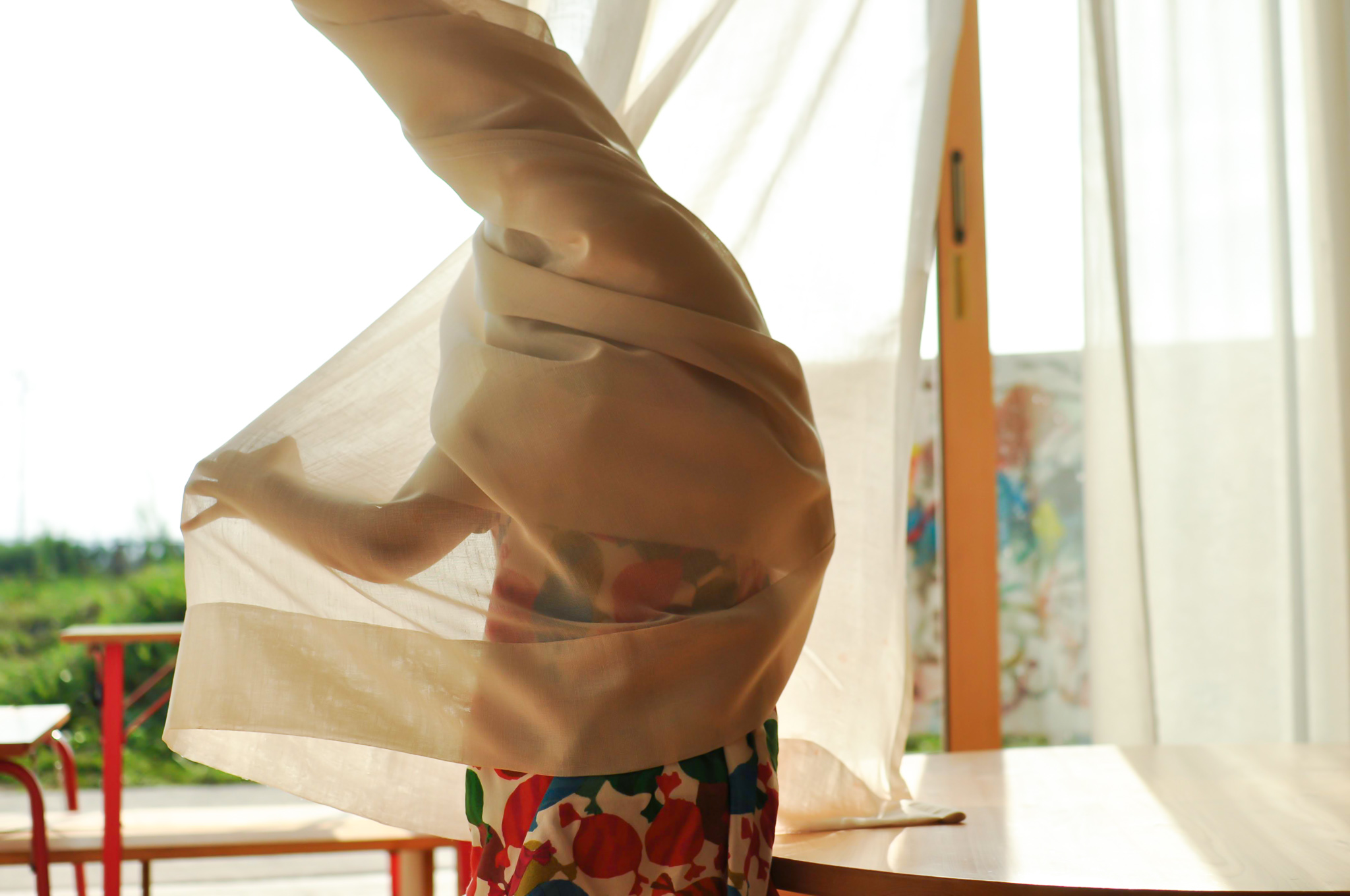
2019.11.01 Open Day Special 6:I myself /my space /house (家) two approaches towards “my space”
Text : Tomoko Nagao
In this text I shall look back on one of the exhibitions “I myself/my space/house” -two approaches towards “my space”, and how everything all started.
Ayumi Osan, the Akebi class staff and the photographer at the same time, played the main role in creating this exhibition. Around September, house building became one of the class trends; witnessing all the different ways and materials used in the classroom, we thought it might be a fun idea to observe and document, and set the theme of exhibition as house making. Accumulating pieces of wood blocks from big to small, covering the bamboo tipi with fabric, bringing small items from classroom to behind the curtain, drawing floor plan on the ground outside -children would make full use of materials around themselves to create their houses in all their ways. And what was even more fascinating was that many children keep their “own space” in the houses built by them, for instance, by calling out “this corner is where I’m sleeping,” “my room is here”, and “this is the chair I made”.
It all started when the exhibition team members had a meeting, and the idea of frequent “house-making” activities by 3-5 year olds had been brought up as exhibition material. Then our discussions developed into a question; we also see 0-2 year olds playing “house” and silently sitting around between a small gap between big materials…is that a house for them? How can we describe this tendency? Perhaps there is some sort of a connection between house making activities and sitting or being sandwiched between the materials. We decided to set this question as our research theme and create the work. Below is the caption of the actual exhibition:
In this corner we exhibit the two different state and trait of children exploring their own “space”.
One is children finding their own “space” that perfectly fits them here and there, and squeezing themselves into a gap looking satisfied. The other one is children aged 3-5 creating their “living spaces” called home by building from scratch.
Here we question; why do children fit themselves in a gap?
What does it mean for children to build a house?
From our point of view, children who spend their time in a gap seem to be acknowledging the existence of themselves, the shapes and forms of their physiques. Also, when 4-5 year olds (who shows the most passion towards house building) tell us “come visit mine!”, it sounds as though they are introducing themselves, which makes it sound like they have a particular sensitivity that they are the house itself. Moreover, it motivated our curiosity in the scenes where children say “let’s return the grasshopper home,” “why don’t we take him back home so he can see mummy,” frequently using the word “home (家)”. For children, “home” is a space or a zone that reassures them with security, just like “mother”, and a vital factor to realise the existence of oneself (in other words, the loss of “home” would practically mean the loss of self).
Perhaps the reason why they try to fit in the gap, or so it is called “own space” is because they want to acknowledge their own existence. What’s more, they do house-making probably to visualise and confirm their own place safe and secure called home, and internalising it to realise themselves.
And this is how the title, “I myself/my space/house” -two approaches towards “my space”, had come up.













 PREV
PREV